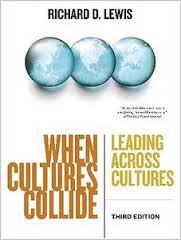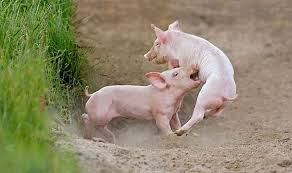Philippines news articles 2006-2007
Miss Universe Pageant Winners (until 2001)
| Miss Universe 1952 | Armi Kuusela | Finland |
| Miss Universe 1953 | Christiane Martel | France |
| Miss Universe 1954 | Miriam Stevenson | USA |
| Miss Universe 1955 | Hellevi Rombin | Sweden |
| Miss Universe 1956 | Carol Morris | USA |
| Miss Universe 1957 | Gladys Zender | Peru |
| Miss Universe 1958 | Luz Marina Zuluaga | Columbia |
| Miss Universe 1959 | Akiko Kojima | Japan |
| Miss Universe 1960 | Linda Bement | USA |
| Miss Universe 1961 | Marlene Schmidt | Germany |
| Miss Universe 1962 | Norma Nolan | Argentina |
| Miss Universe 1963 | Idea Maria Vargas | Brazil |
| Miss Universe 1964 | Corinna Tsopei | Greece |
| Miss Universe 1965 | Apasra Hongsakula | Thailand |
| Miss Universe 1966 | Margareta Arvidsson | Sweden |
| Miss Universe 1967 | Sylvia Hitchcock | USA |
| Miss Universe 1968 | Martha Vasconcellos | Brazil |
| Miss Universe 1969 | Gloria Diaz | Philippines |
| Miss Universe 1970 | Marisol Malaret | Puerto Rico |
| Miss Universe 1971 | Georgia Risk | Lebanon |
| Miss Universe 1972 | Kerry Anne Wells | Australia |
| Miss Universe 1973 | Margarita Moran | Philippines |
| Miss Universe 1974 | Amparo Munoz | Spain |
| Miss Universe 1975 | Anne Marie Puhtamo | Finland |
| Miss Universe 1976 | Rina Messinger | Israel |
| Miss Universe 1977 | Janelle Commissiong | Trinidad/Tobago |
| Miss Universe 1978 | Margaret Gardiner | South Africa |
| Miss Universe 1979 | Maritza Sayalero | Venezuela |
| Miss Universe 1980 | Shawn Weatherly | USA |
| Miss Universe 1981 | Irene Saez | Venezuela |
| Miss Universe 1982 | Karen Baldwin | Canada |
| Miss Universe 1983 | Lorraine Downes | New Zealand |
| Miss Universe 1984 | Yvonne Ryding | Sweden |
| Miss Universe 1985 | Deborah Carthy-Deu | Puerto Rico |
| Miss Universe 1986 | Barbara Palacios Teyde | Venezuela |
| Miss Universe 1987 | Cecilia Bolocco | Chile |
| Miss Universe 1988 | Porntip Nakhirunkanok | Thailand |
| Miss Universe 1989 | Angela Visser | Holland |
| Miss Universe 1990 | Mona Grudt | Norway |
| Miss Universe 1991 | Lupita Jones | Mexico |
| Miss Universe 1992 | Michelle McLean | Namibia |
| Miss Universe 1993 | Dayanara Torres | Puerto Rico |
| Miss Universe 1994 | Sushmita Sen | India |
| Miss Universe 1995 | Chelsi Smith | USA |
| Miss Universe 1996 | Alicia Machado | Venezuela |
| Miss Universe 1997 | Brook Lee | USA |
| Miss Universe 1998 | Wendy Fitzwilliam | Trinidad-Tobago |
| Miss Universe 1999 | Mpule Kwelagobe | Botswana |
| Miss Universe 2000 | Lara Dutta | India |
| Miss Universe 2001 | Denise Quinones | Puerto Rico |
When Cultures Collide, 3rd Edition: Leading Across Cultures (Richard Lewis)
 rson who grew up in New Zealand, with a Filipino mother and that spent alot of time in the Philippines this book was a very interesting read and i was able to relate to dealing with alot of cultural differences in the Philippines as an athlete and student. Then it also interested me as I completed my bachelors degree in International Relations and International business from International Pacific College, New Zealand 2007 and was exposed to students of several different cultures. Working in Australia the culture was more similar to New Zealand and then working again for the second time in the Philippines was a time to fine tune what i had learnt. I never read this book during my time studying Intercultural communication.
rson who grew up in New Zealand, with a Filipino mother and that spent alot of time in the Philippines this book was a very interesting read and i was able to relate to dealing with alot of cultural differences in the Philippines as an athlete and student. Then it also interested me as I completed my bachelors degree in International Relations and International business from International Pacific College, New Zealand 2007 and was exposed to students of several different cultures. Working in Australia the culture was more similar to New Zealand and then working again for the second time in the Philippines was a time to fine tune what i had learnt. I never read this book during my time studying Intercultural communication.
Richard Lewis is a speaker of 12 languages and herein lie some clues to his understanding of intercultural communication.His book avoids the complex academic distinctions seen elsewhere and concentrates on practical understanding of each nation’s “collective programming”. It has helped me to understand how to deal and work with people of other nations with much increased effectiveness. Lewis explains why there are differences, and how we should approach them, using many simple diagrams and patterns. A must for anyone interacting internationally, or indeed with different ethnic groups within their own country.
Related articles
Surprise! Microsoft jumps to Windows 10 (System Requirements) rev 1
1 Oct 2014
Forget Windows 9. In an unexpected twist, Microsoft will be going straight to double digits from Windows 8 as it faces a challenging future for its operating system.
Related articles
Questions on the Universe
13 September 2014
Some interesting corrections involving scientific theories.
What is the purpose of the Universe?
What is the Universe Expanding into?
What is that shape of the Universe?
Where is the centre of the Universe?
What is the smallest thing in the Universe?
Anti Selfi bill in congress
Watch the latest episode of Bandila also in iWant TV or TFC
MANILA - If you’re the type of person who enjoys taking random snapshots of people, places, things and even the ubiquitous selfies and groupies and then posting them on social media, better be careful.
According to Bayan Muna Rep. Carlos Zarate, there’s a bill in Congress that seeks to bar taking photos of people without their permission.
House Bill 4807 or the Protection against Personal Intrusion Act is now up for 3rd reading in plenary.
It defines “intrusion of personal privacy” as “any person who willfully intrudes into the personal privacy of another, without the consent of that person and with the intent to gain or profit therefrom, shall be civilly liable to the offended party.”
“HB 4807 will create a chilling effect on media and would especially affect citizen journalism. It would punish with civil suit taking photos,video or even audio recording anything claimed as a personal/ family matter even of public officials and personalities,” Zarate said.
“Even an innocuous selfie with public figures at the background would be liable for ‘intrusion of privacy’. This is absurd and we urge our colleagues to reconsider,” he added.
According to HB 4807, the following acts are considered an intrusion into the personal privacy of another and shall be presumed to have been committed with the intent to gain or profit.
-capturing by a camera or sound recording instrument of any type of visual image, sound recording or other physical impression of the person
-trespassing on private property in order to capture any type of visual image, sound recording or other physical impression of any person
-capturing any type of visual image, sound recording or other physical impression of a person or family activity through the use of a visual or auditory enhancement device even when no physical trespass has occurred, when the visual image, sound recording or other physical impression could not have been captured without a trespass if no enhancement device was used.
Section 4 of the bill says any person whose personal privacy was intruded as defined may in a civil action against the person who committed the intrusion, obtain any appropriate relief, including compensatory damages, punitive damages, and injunctive and declaratory relief.
Any person obtaining relief may be either the person whose visual or auditory impression has been captured or the owner of the private property trespassed to capture the visual image, sound recording or other physical impression of another.
“The fact that no visual image , sound recording or other physical impression of a person was actually sold for gain or profit shall not be available as a defense in any civil action or proceeding for the enforcement of the provisions of this act,” the bill explained.
The only exemption from this act are legitimate law enforcement activities.
The bill is authored by Congressmen Rufus Rodriguez, Maximo Rodriguez, Jorge Almonte, Gwendolyn Garcia, Linabelle Ruth Villarica, Lito Atienza and Leopoldo Bataoil.
NO MORE SELFIES, PAPARAZZI?
Critics said the bill has wide ranging implications on press freedom and even social media.
Jose Torres Jr., board member of the Photojournalists’ Center of the Philippines (PCP), Inc., said the bill needs to define what “intent to gain or profit therefrom” means.
“It would seem that people from the media and journalists can be targets of the proposed measure. Worthy of being emphasized is the phrase ‘with intent to gain or profit therefrom.’ In case a complaint is filed in court against a photojournalist, can lack of intent to gain be used as defense?
“It must be clearly defined what can be classified for ‘gain’ or ‘profit.’ News outfits - newspapers, magazines, television, online publications, radio, and news wire agencies - are basically for profit organizations. There must be clear provisions that specify that news gathering must be exempted from this section,” he added.
The group said it wants media to be exempted from the coverage of the proposed law.
“We suggest to add the qualification ‘unless this is done in the practice of a media professional in the interest of public interest.’ If we limit Sec 3 a, Sec 3 c will then apply only to the protection of privacy clause.”
The group is also pushing for a definition of “private property.”
“Private property must be spelled out and defined. Public places, cars, public transport, public buildings, among others, and individuals, who by nature of their position or profession are classified as public figures, cannot claim violation of privacy. Does ‘personal privacy’ extend to public domain or public places in private spaces, for instance malls, shopping centers, events venues, a luxurious resort, among others?”
On the matter of capturing any type of visual image, the group said this provision can affect journalists who use modern legitimate tools of news gathering like drones with cameras or telephoto lenses.
The group proposed that news and visual storytelling that fall into educating, warning, exposing incidents and events that will benefit the majority of society must be exempted because interest groups can use provisions of the law to put enterprising journalists in tough situations.
The group also wants a corresponding provision of penalty for grave use of authority and clear use of provisions of the law for harassment of journalists.
“Our apprehension is based on the premise that the act being made punishable by this proposed measure is not clearly defined to the point that many acts can be considered ‘malum prohibitum’ or conducts that constitute an unlawful act only by virtue of statute as opposed to conduct evil in and of itself.”
“We worry that this proposed measure can become a tool that ‘unwilling public figures’ will use to suppress press freedom.”
The war on women… in the workplace
Aug 19, 2014
By Michael James Lafferty (The Philippine Star) : Updated June 30, 2014 - 12.00am
MANILA, Philippines - As I sit typing this, anger is spewing out of every keystroke.
Anger at my fellow man. Or “men,†I should say.
In case nobody has noticed, there is an all-out war going on against women. All over the place.
Don’t believe it? Well, you may want to remove your head from the sand and take a look around.
Two hundred girls are kidnapped and forced into marriage in Nigeria, in a village I once traveled to when I worked there. They haven’t been found and the world has suddenly forgotten them. It’s now illegal in Nigeria to even demonstrate for them! When was the last time we heard of 200 boys being kidnapped and forced into marriages?
A woman in Pakistan is stoned to death by her own family for marrying someone she loved, instead of marrying the man they had chosen for her. It’s called “honor killing†and is legal in many places. When did we last hear of a man being killed by his family for choosing a wife on his own?
A friend of mine last week asked me to help one of her friends by giving her some therapy advice for rehabilitating a fractured elbow. The woman is a highly educated optometrist and mother of a toddler, juggling a professional life, motherhood, and being a loyal spouse. What happened? Well, she was beaten by her husband and sustained the fracture when she was knocked down the stairs. No charges, no justice. She is still living at home and now faces an uphill rehabilitation battle to regain full use of her arm.
Several months ago an acquaintance was sexually assaulted by two of her “friends†at a celebration in a prominent resort. No charges have been filed despite widespread “bragging†by the men involved, even on social media. Meanwhile, a wonderful person is left traumatized and depressed and hoping the passage of time will make the pain subside.
Philippines Population now exceeds 100 Million

Queues going down the road as far as the eye can see are examples of some challenges the Philippines government face with an ever growing population.
1.39% of the Worlds Population now is Filipinos. It has exceeded 100 Million People.
Philippine population officially hits 100 million.
(UPDATED) With the birth of a baby girl in the early hours of July 27 – the symbolic 100 millionth Filipino alive – the government reiterates its commitment to fight poverty.
Interesting article it reminded me to when i did my thesis way back in 2006 at International Pacific College on is the Population Growth of Manila effecting the economic development of the Philippines.
So as Yogon quotes blatantly are we merely “Fucking beyond our means”
How Ironic the government is talking about fighting poverty and not making any means necessary to educate on population growth.
This is not an occasion to celebrate. It’s sad that the population is so large, considering the preponderance of poverty. Why is it that poor people cannot be taught birth control? What is wrong with the education system and government system that the poor continue to pop out children with no regard whatsoever for the future of their kids? This is just absolutely wrong. The population of uneducated, below average minds are growing, and this will continue to make the Philippines a country composed of a majority of incompetent, two-digit IQ citizens. This is very sad news. We must control population growth so that there is quality education and quality of life. Quotes Aryanna_EQ
While a growing population means a larger workforce, it also means more dependents in a country where about 25% of people are living in poverty, Perez said.
He said the Philippines had to find a way to bring services to the poorest families while also lowering the average number of children that fertile women will bear in their lifetimes.
“We’d like to push the fertility rate down to two children per (woman’s) lifetime,” from the current level of an average of three per woman, he said.
Growth of the Philippines Population from 1960 to 2010
| 1960 | 1970 | 1975 | 1980 | 1990 | 1995 | 2000 | 2007 | 2010 |
| 27,087,685 | 36,684,948 | 42,070,660 | 48,098,460 | 60,703,206 | 68,616,536 | 76,504,077 | 88,574,614 | 92,337,852 |
WORLD MOST POPULOUS COUNTRIES
| 1 |  China[8] China[8] |
1,366,070,000 | August 10, 2014 | 19% | Official population clock |
| 2 |  India India |
1,247,770,000 | August 10, 2014 | 17.4% | Population clock |
| 3 |  United States United States |
318,537,000 | August 10, 2014 | 4.44% | Official population clock |
| 4 |  Indonesia Indonesia |
252,164,800 | July 1, 2014 | 3.51% | Official estimate |
| 5 |  Brazil Brazil |
202,977,000 | August 10, 2014 | 2.83% | Official population clock |
| 6 |  Pakistan Pakistan |
188,020,000 | July 1, 2014 | 2.62% | Official annual projection |
| 7 |  Nigeria Nigeria |
178,517,000 | July 1, 2014 | 2.49% | UN projection[6] |
| 8 |  Bangladesh Bangladesh |
156,771,000 | August 10, 2014 | 2.18% | Official population clock |
| 9 |  Russia[9] Russia[9] |
146,068,400 | June 1, 2014 | 2.03% | Official estimate |
| 10 |  Japan Japan |
127,100,000 | July 1, 2014 | 1.77% | Monthly official estimate |
| 11 |  Mexico Mexico |
119,713,203 | July 1, 2014 | 1.67% | Official projection |
| 12 |  Philippines Philippines |
100,068,900 | August 10, 2014 | 1.39% |
Missing Jollibee Chicken more than just a supply issue
Aug 13, 2014
In a note published Monday on Facebook, political management expert Malou Tiquia said there are deeper questions about the problem, which the company’s crisis team have yet to respond to and satisfy its public.
Related articles
The Quick 10 What the descendants of 10 Dictators have been upto
Aug 12, 2014
If you took my Scents and Sensibilities Quiz, you already know that Svetlana Stalin had her own line of perfume. And if haven’t already taken my quiz, now you can be sure to get at least one right. If this seems like a surprising fact, wait until you see what the descendants of other dictators have been up to”

1. Alessandra Mussolini, the daughter of Benito Mussolini’s son and his first wife, Anna Maria Scicolone (who also happened to be Sophia Loren’s sister). Alessandra has been all over the place ““ she’s been a Playboy model, an actress and a singer. The album was only released in Japan, though, and is apparently quite the collector’s item. She was also the leader of a right-wing political party and kicked the minister for equal opportunities on a talk show. It happens at about 43 seconds into the linked video, if you’re interested.
2. Svetlana Alliluyeva, Joseph Stalin’s daughter, defected to the United States in 1967. Sometime in 1970, she was contacted by Frank Lloyd Wright’s widow, who believed that Svetlana was a reincarnation of her daughter, who died in a car crash in 1946 (her name was also Svetlana). The widow Wright (the widow Lloyd Wright?) wrote Svetlana letters encouraging her to come visit Taliesin West, and when she did, she was promptly introduced to Wes Peters, one of Frank Lloyd Wright’s apprentices”¦ and also the widower of Svetlana #1. Is this making sense? It’s quite the tangled web. Basically, the widow Wright arranged for the “reincarnation” of her daughter to remarry her husband only three weeks after their introduction. The marriage lasted only 20 months.
3. Valentin CeauÅŸescu, Nicolae Ceausescu’s adopted son, is a nuclear physicist.
4. Marko Milosevic, Slobodan’s son, basically seems to be a thug. He was one of the most-feared people involved in his father’s regime and ran a nightclub called Madonna and a theme park called Bambiland. He was charged with threatening a demonstrator with a chainsaw in 2001, but by the time the charges were brought up, he had fled to Moscow. He gave an interview in 1991 and said, “I have to have a girl and music and a car and gun. I would like guns to remain my passion.” So that’s”¦ good”¦

5. Zury Rios Sosa, the daughter of Guatemalan dictator General Efrain Rios, married Illinois Congressman Jerry Weller. Her father presided over some of the wedding and added his wisdom to the proceedings, including “the husband is the brains of his woman … who should be loved like the church loves Christ.” Zury Rios Montt Sosa de Weller still serves in the Guatemalan government and fully supports her father, saying, “My father is my inspiration.”Â
6. Alina Fernandez, Fidel Castro’s estranged daughter, is a commentator for CNN. Her specialty, of course, is Cuba and Cuban politics. She also hosts a radio show in Miami and has released a book called Castro’s Daughter: An Exile’s Memoir of Cuba. It has been optioned for a film by the producer of Crash, The Black Donnellys and Million Dollar Baby.
7. Faisal Wangita, the son of Idi Amin (one of 43 of his children), is in prison. Go figure. In 2007, he was convicted for being part of a gang in North London that stabbed and bludgeoned an 18-year-old man to death. The man was part of a rival gang. Wangita was cleared of murder charges, but found guilty of conspiracy to wound, conspiracy to possess offensive weapons and violent disorder.

8. Ferdinand Martin “Borgy” Manotoc, the grandson of Ferdinand and Imelda Marcos, interns for Manolo Blahnik. I’m kidding. He’s a model and celebrity, kind of famous for being famous, as far as I can tell. And looking at this picture, all I can think is “Blue Steel.”Â
9. Ayesha Qaddafi, the daughter of Muammar al-Gaddafi, is a lawyer who served on Saddam Hussein’s defense team. Her brother, Saadi, played professional soccer for Libya and Perugia for a while, but it seems to have run its course: his 2006-2007 season with U.C. Sampdoria didn’t give him a single second of playing time during a game. He has since tried to pursue the movie business and approached Harvey Weinstein about filming a movie about Hannibal in Libya, but Weinstein abruptly cut him off, saying that Libya would have to recognize Israel before Miramax would do any business with them. Saadi laughed about his first Hollywood encounter, saying, “The first touch was a very hot touch.” Another brother, Moatassim, was caught trying to buy tanks and short-range missiles for her personal army. Moatassim said his father was pretty amused by that and admonished him with, “These are very aggressive weapons and you are still young, maybe when you get a bit older.”Â
10. Jean-Bedel Bokassa, the self-elected Emperor of the Central African Republic, lived a lavish life that included gold-plated beds and spent the equivalent of his country’s gross national product on his coronation ceremony, apparently left behind 62 children who are now destitute. After the French government overthrew his administration in 1979, the government instituted a ban on displaying anything having to do with Bokassa. His children and grandchildren now live on the grounds in outhouses because the main building is too rundown to serve as proper quarters. They’ve petitioned the government to restore the grounds, saying that the palace might serve as a good tourist attraction.
Who are the ‘millennials’ and why are they like that–and why not?
June 22, 2014
Their parents and bosses try to figure them out
By Cheche V. Moral
Philippine Daily Inquirer
They’re constantly tweeting, taking selfies, texting. They’re spoiled, narcissistic, always seeking attention. They’re easily bored and can’t stay put in one job. Doted on and their whims indulged while growing up, they have a strong sense of entitlement.
That’s on one hand. On the other hand, they’re very sociable and are used to mingling with diverse groups. They like to work in teams. They’re confident and ambitious. They’re also open-minded and liberal. And owing to their tech gadgets, they’re always in touch with their parents and family.
These are generalizations that could easily be ascribed to just about anybody. Social researchers, however, have attributed these stereotypes to the “Me†generation, a single group called “millennials,†those born in the early 1980s to early 2000s (roughly age 10-32).
Just like their parents before them, Gen Xers and Baby Boomers are scratching their heads over these so-called millennials—their own spawns—and how vastly different their seemingly collective values and behaviors are from their parents.
As is often the case, there is a wide generational divide. After all, who hasn’t heard from their elders the lines that begin with, “In my time, we didn’t do this or that…� As one parent of millennials wonders, “Is it the parents’ fault?†as if, indeed, something is askew and wrong with this generation.
Millennials are also known by one other famous moniker: Generation Y, though the use of the term millennial has been having a resurgence of late, especially in the western context—a marketing thing, perhaps?—even as it has been in use since 1991, owing to the authors William Strauss and Neil Howe, who wrote about the generational history of the US, and thus are credited for having named this age group.
Indeed, researches and social surveys on the so-called millennials have been done mostly in the context of the developed and affluent countries. But with the world getting smaller, youths across the globe are sharing more commonalities than ever before, not least among them how wired and dependent on technological devices they are.
In the end, are millennials as bad and hopeless as they are made out to be? Some parents, employers, and an educator weigh in.
Read the Full Article Here
Why Cheetahs Never Prosper (or the genetic bottleneck problem)
Dec 11, 2013
Between Easter’s religious reminders and a molecular evolution class overdose of population genetics, I shouldn’t have been surprised to wake up yesterday from an unsettling dream about taking my midterm exam on Noah’s Ark. The ocean was rising, Noah was hustling animals aboard, and I was battling asthma (thanks, furry animal allergies). But what bothered me most about all this wasn’t that I’d forgotten the formula for heterozygosity. It was that there were only two animals of every kind.
Religious beliefs aside, today’s scientific consensus is that you need more than two individuals to save a species.
That’s because species survival isn’t just about baby-making potential. It also depends on genetic diversity: the number of traits (in humans, things like skin color, height or even intellectual aptitude) present in the breeding population. This diversity may be obvious, it may be subtle or it may be invisible, detectable only by extracting and sequencing samples of DNA.
The more genetic diversity a population has, the more resilient it tends to be. When the environment changes, the population faces new adaptive pressures. In a diverse population, it’s more likely that someone will have a set of traits well-suited for the new conditions. The idea also suits a well-developed NFL defense: the team practices a variety of plays so that it’s prepared for any offensive strategy.
As you might expect, the smaller your team (or your population), the slimmer your adaptive playbook. So unless they got really lucky, the pair of animals you picked for your modern-day ark probably wouldn’t be able to re-establish their species.
In genetics, we use the phrase “genetic bottleneck†to describe diversity loss in a shrinking population. If the breeding population gets too small, the negative effects of inbreeding may run rampant. Think of the Romanov family and hemophilia, for example, and you’ll begin to see some biological reasons for the social stigma surrounding “incest.â€
If the population isn’t fraught with lethal genetic disorders, it may rebound to a substantial size — but that doesn’t mean it’s safe. It takes millennia for genetic diversity to develop (through the slow accumulation of changes to the DNA sequence), so even a large population may still bear the low-diversity signature of bottlenecks past.
That’s a major reason that cheetahs, for example, are hovering on the brink of extinction. Of course, cheetahs face the same human threats (habitat loss, poaching, etc.) that most African wildlife does. But while other species are recovering slowly under watchful conservation eyes, the cheetah isn’t sprinting back. The secret is written all over its DNA.
Where most mammals share about 80 percent of their genes with other members of their species, cheetahs share 99 percent — more than you or I have in common with even our closest relatives (save for identical twins). So the miraculous genetic reshuffling of sexual reproduction — which evolved to produce varied offspring to meet a variable world — can’t help cheetahs claw back into synchrony with a changing environment.
The original cheetah bottleneck probably happened about 10,000 years ago, but other bottlenecks have been much more recent. The European bison, or wisent, population dwindled to 12 in the 1920s; California’s sea otters trace their ancestry to only 50 individuals alive in 1938. We may yet see the legacy of those bottlenecks in our conservation efforts.
But while most of us love animals, all of us depend on food. And the most troubling bottlenecks of all are those of our key crops, cut off from wild populations through domestication and further winnowed by breeding and (lately) genetic modification to just a few varieties.
In a stable environment (like the one we create with irrigation, fertilizers and pesticides), it makes sense to plant only the highest-yielding variety. But monocultures are risky: The Irish Potato Famine killed one million people because single-variety crops were entirely vulnerable to disease.
Today, you can see the importance of crop diversity in eastern Ethiopia, where a hard year means a hard life (not just an expensive one). There, Romina Cavatassi and colleagues from the UN’s Food and Agriculture Organization found that growers who’d switched to modern monocultures suffered more crop failures than their native-mixture-growing neighbors — even though, in a good year, modern seeds performed better.
Worldwide, though, agriculture is shifting from diverse crops to industrial monocultures. We’re losing the very varieties that spare Ethiopian fields as a result. At a time when climate change and fuel shortages loom on the horizon, it’s never been more important to save that diversity. Who knows which variety holds the key to drought tolerance? Or will resist the sweep of the next major pest?
While squirreling DNA away in freezers and seed banks has won favor amid desperate conservation efforts, in reality the best way to preserve genetic diversity is to preserve it in situ. Today, we award huge grants to jet-setting scientists, who stock seed banks with 70-percent redundant collections. Instead, we should reward the farmer for planting his family’s heirloom varieties instead of Monsanto’s globalized products. And we should expand “biodiversity†to mean “genetic diversity,†and protect our wildlife (and our crops) from future genetic bottlenecks. Because a genetic bottleneck, like a real one, is nearly impossible to break out of.
This piece was originally published in the Stanford Daily on April 28, 2011
Related articles
10 Things I Bet You Didn’t Know about PIGS!
November 17, 2011 at 4:40am
1. Pigs are genetically very close to humans. The flesh of swine is so similar to our own that if you eat undercooked pig you get all kinds of crazy parasites that live equally as well in our own flesh/brains. Some pork can be contaminated with roundworms, which lead to intestinal infection. This infection, called trichinosis, causes abdominal cramping, diarrhea and
other gastrointestinal symptoms, explains PubMed Health. To avoid trichinosis, it’s important to cook all pork thoroughly — don’t ever consume pork that contains pink meat in the middle. And if your going to eat pork, only purchase it from your local organic free range farmer.
2. The heart of swine will pump if placed in a human chest! Here’s an example of a Jewish man who opted to receive a pig heart rather than a human heart.http://findarticles.com/p/articles/mi_qn4161/is_19980412/ai_n14477804/
3. Some say humans taste like pork. Cannibals would often refer to human meat as “long pig” or “long pork” because WE TASTE JUST LIKE PIG. Wikipedia article on cannibalism:http://en.wikipedia.org/wiki/Cannibalism
What we need are some proper cannibals, and where better to start than one of Germany’s most infamous citizens, the cannibal Armin Meiwes. Having eaten an estimated 20kg of his victim, Meiwes is something of an expert on the subject, and in an interview from his prison cell he was more than happy to explain the taste, “The flesh tastes like pork, a little bit more bitter, stronger. It tastes quite good.”
http://www.guardian.co.uk/science/the-lay-scientist/2010/sep/05/human-meat-taste-cannibal
4. Pig blood will keep you alive if transfused into your blood. This means that the blood in that tasty sausage is just like the blood pumping through your veins:
http://www.crt-online.org/121800.html
5. Pig skin can be grafted onto your body, and it will grow there.
http://emedicine.medscape.com/article/1295109-overview
6. Pigs teeth are just like ours!
http://www.olympusmicro.com/micd/galleries/darkfield/enamelformationpig.html
7. Pigs will eat anything, bone included. It is better than urban legend that organized crime will dump bodies in a pig pen because pigs will eat it. There was a case recently in BC where a commercial pig farmer was arrested in the murders of 52 lower East Side prostitutes, and it was discovered that a lot of the evidence against him was because they found bone gristle and DNA in the soil of the pig pens. He was connected to Hell’s Angels and other organized crime, and whatever he was doing human disposal for someone.
8. Pigs, has cute and smart as they are, are scavengers and filters. Additionally, eating “bottom feeders” from the ocean (shellfish, catfish) might be a bad idea.
9. Of all the meats we consume, pork is one of the most difficult to digest. Pork takes approximately four and a half to five hours to digest. It’s a bit more challenging to digest fat than it is to digest protein because fat isn’t water soluble so it doesn’t easily mix with digestive juices.
10. Ten Dirty little secrets about Pig CAFO’s (Concentrated Animal Feed Operations):
1. Piglets have their two front teeth removed to prevent them from biting each other, and their tails cut off without any anesthesia.
2. Pigs are packed into pigsties for 6 to 8 weeks to fatten up.
3. The pigsties are washed out once a week, employees wear face masks because the smell is really gross.
4. Main stream grocery stores and Restaurants purchase directly or indirectly from CAFO’s, so by buying at these establishments you support this inhumane treatment of animals and you support the toxins, antibiotics, pesticides and hormones that people consume.
5. 100 million hogs are slaughtered each year.
6. Pigs crammed so tightly together, their fecal waste falls through metal grates upon which they stand throughout the day and night.
7. They are fed GMO corn and soy, and when you eat them, so are you.
8. Iowa’s 5,000 confinement hog facilities generates over 50 million tons of raw waste, equivalent to 16.7 tons of animal manure for every resident.
9. They spend their entire lives in a cement floored facility without access to the outdoors.
- This is what a CAFO looks like: http://www.youtube.com/watch?v=pIJGgDBExkY
Dr. Rasid Buttar the author of, “9 Things to Keep the Doctor Away” says the two things people should never eat are Pork and Margarine.Margarine is obvious, it’s liquid plastic, and Pigs (really any farm animal) from CAFO’s are no good for humans or animals.
In part 2, Dan Imhoff continues his talk about CAFO’s to a Friends of Family Farmers audience concerned about the health and well being of their communities, and who support the creation of more sustainable, and environmentally healthy alternatives from that of our heavily industrialized, food system.
Support Your Local Organic and/or Grass fed, Free Range Farmer Today!
resource: http://forum.davidicke.com/archive/index.php/t-103187.html



 The Art of Negotiation_
The Art of Negotiation_

 Microsoft Unveils Windows 10; Runs on ‘Broadest Types of Devices Ever’
Microsoft Unveils Windows 10; Runs on ‘Broadest Types of Devices Ever’








 Jollibee apologizes to ‘chicken sad’ customers
Jollibee apologizes to ‘chicken sad’ customers







